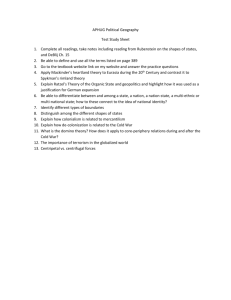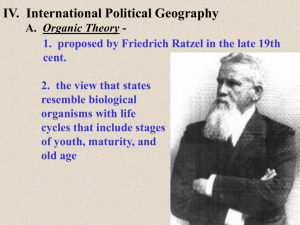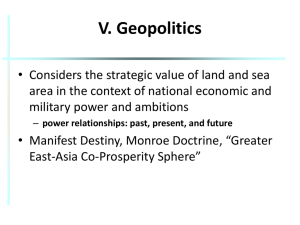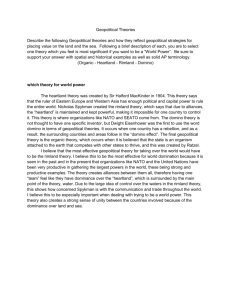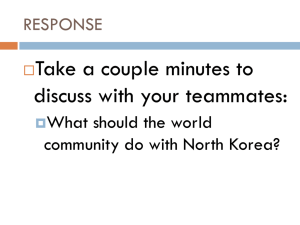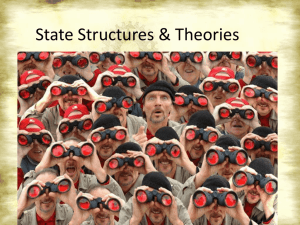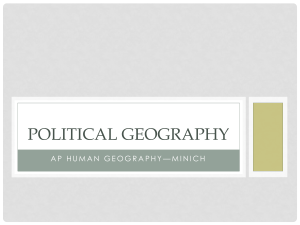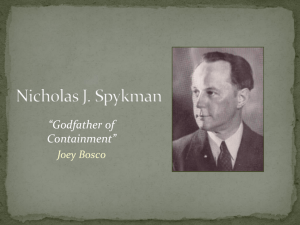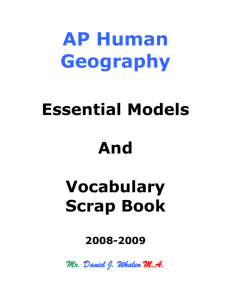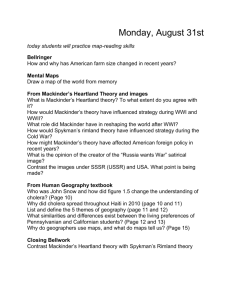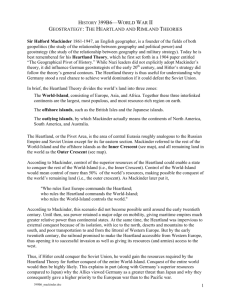political models
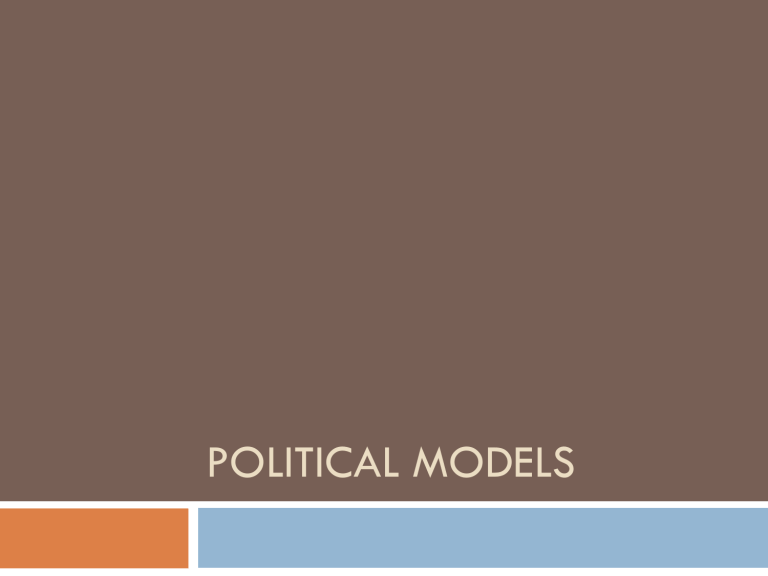
POLITICAL MODELS
Heartland-Rimland Model
In 1904, British geographer Halford Mackinder proposed what would become known as the
Heartland-Rimland model
It was an effort to define the global geopolitical landscape and determine areas of potential future conflict
He stated that agricultural land was the primary commodity that states were interested in
The Heartland was the Eastern European Steppe, a very productive area of grain agriculture mostly controlled by the Russian Empire at that time & the mineral and timber rich region across the Urals into
Siberia
It was this portion of the Earth’s surface that boarding
Rimland states such as the German Empire, the Austro-
Hungarian Empire and Romania were potential invaders of
Rimland also contained other landwolves eager to grab at neighboring territories such as France and Italy
& seawolves, such as Great Britain & Japan
Predictive Power of the Model
In effect, Mackinder accurately predicted the battle lines of the Eastern Front during WW I
In 1921 he revised the model expanding the
Heartland further into Central Europe
From 1904 onward Mackinder points out that the areas of future conflict are the borderlines between the Heartland and the Rimland
The prediction comes true again in 1931 with the invasion by the Japanese which some identify as the start of WWII
Shatterbelt Theory
Proposed in 1950 by Saul Cohen
He modified Mackinder’s Heartland into the “Pivot
Area” and Rimland into the “Inner Crescent”
The rest of the world became the Outer Crescent including the US
His concept was that the Cold War conflicts would likely occur within the Inner Crescent
He pointed out several Inner Crescent areas of geopolitical weakness he called Shatterbelts
Containment Theory
Conflict areas like the Soviet Union and China would attempt top capture to create buffer states, lands that would protect them by creating a surrounding buffer of sympathetic countries
U.S. diplomat George Kennen first proposed the strategic policy of containment in 1947
He proposed the U.S. and its allies would attempt to build a containment wall around the core communist states
Anytime the USSR or China attempted to expand the realm of influence politically the forces of NATO would be deployed to stop them
It was successful at first and communist movements were stopped in Greece, Iran and Malaysia
However, Communist reached a military stalemate in Korea in 1953 and won military victories
That along with communist takeovers in countries like
Hungary, Angola, Cuba and Nicaragua were evidence their were limitations to the containment theory (communism spread to the outer cresent)
The U.S. and its allied states had to contain these soviet controlled satellite states to prevent communism from spreading
They feared the domino effect where one state would fall to communism and then inspire and support communist uprisings
Despite the failings of the containment approach.
Communism was limited due to the number of buffer states
